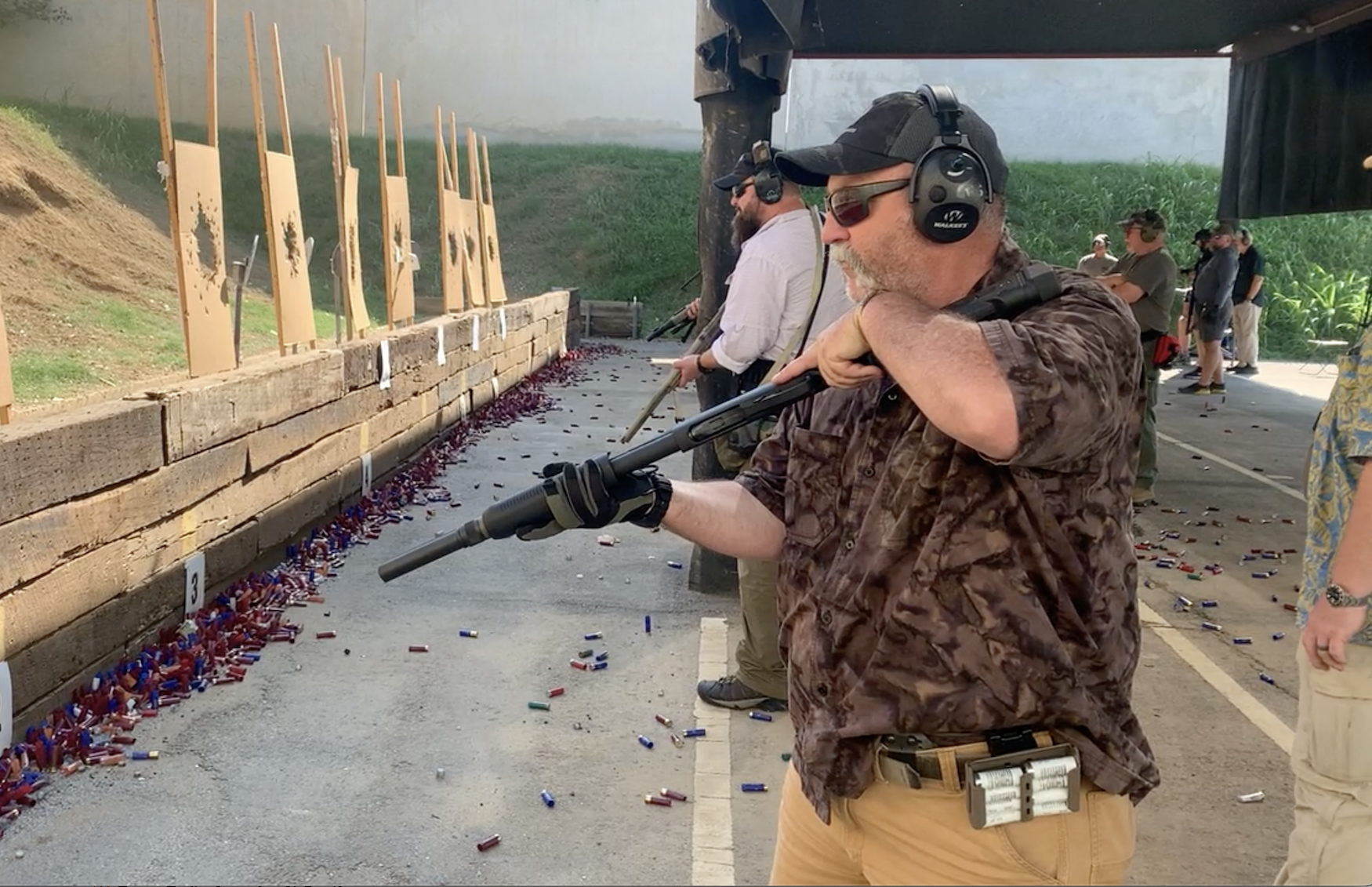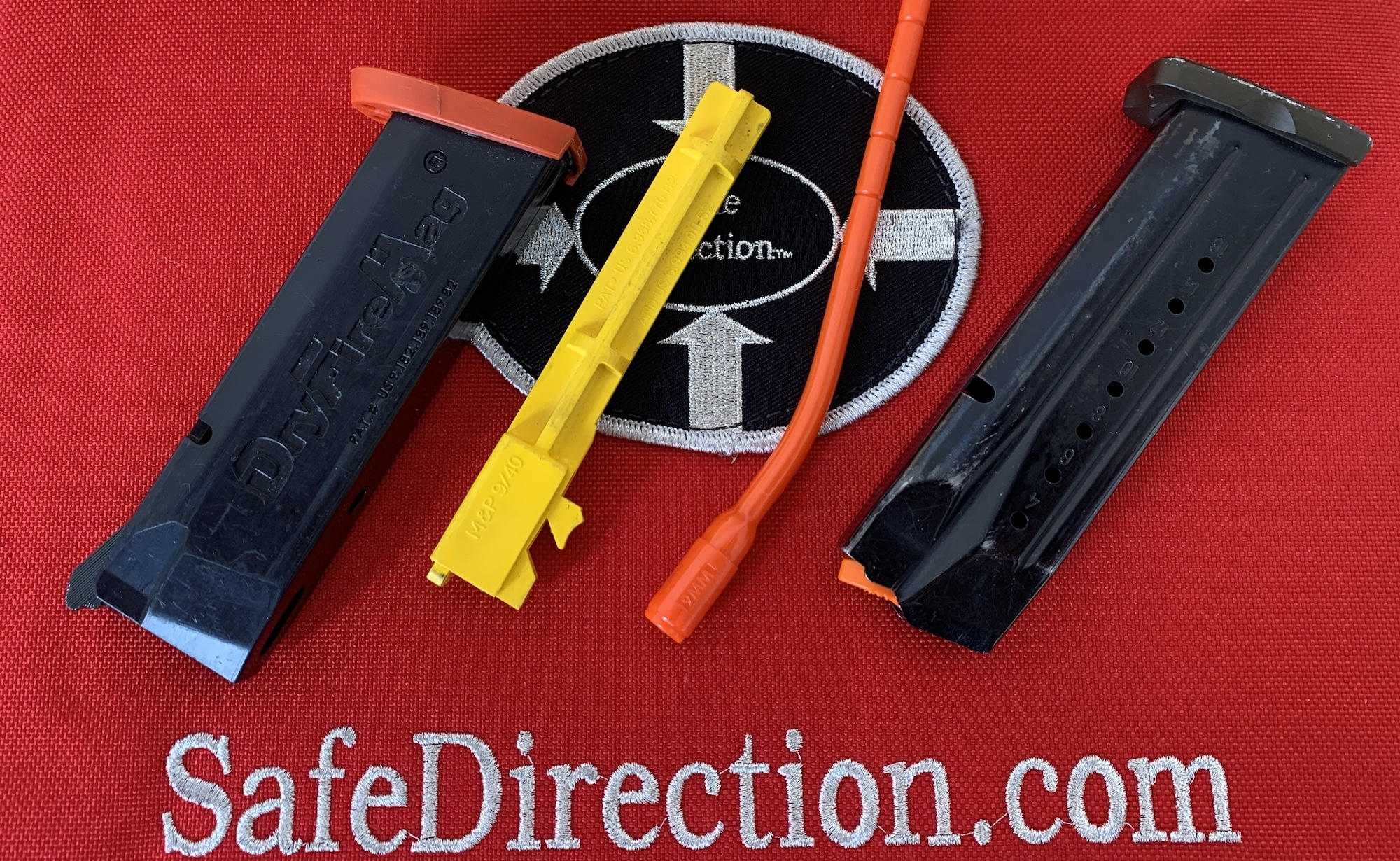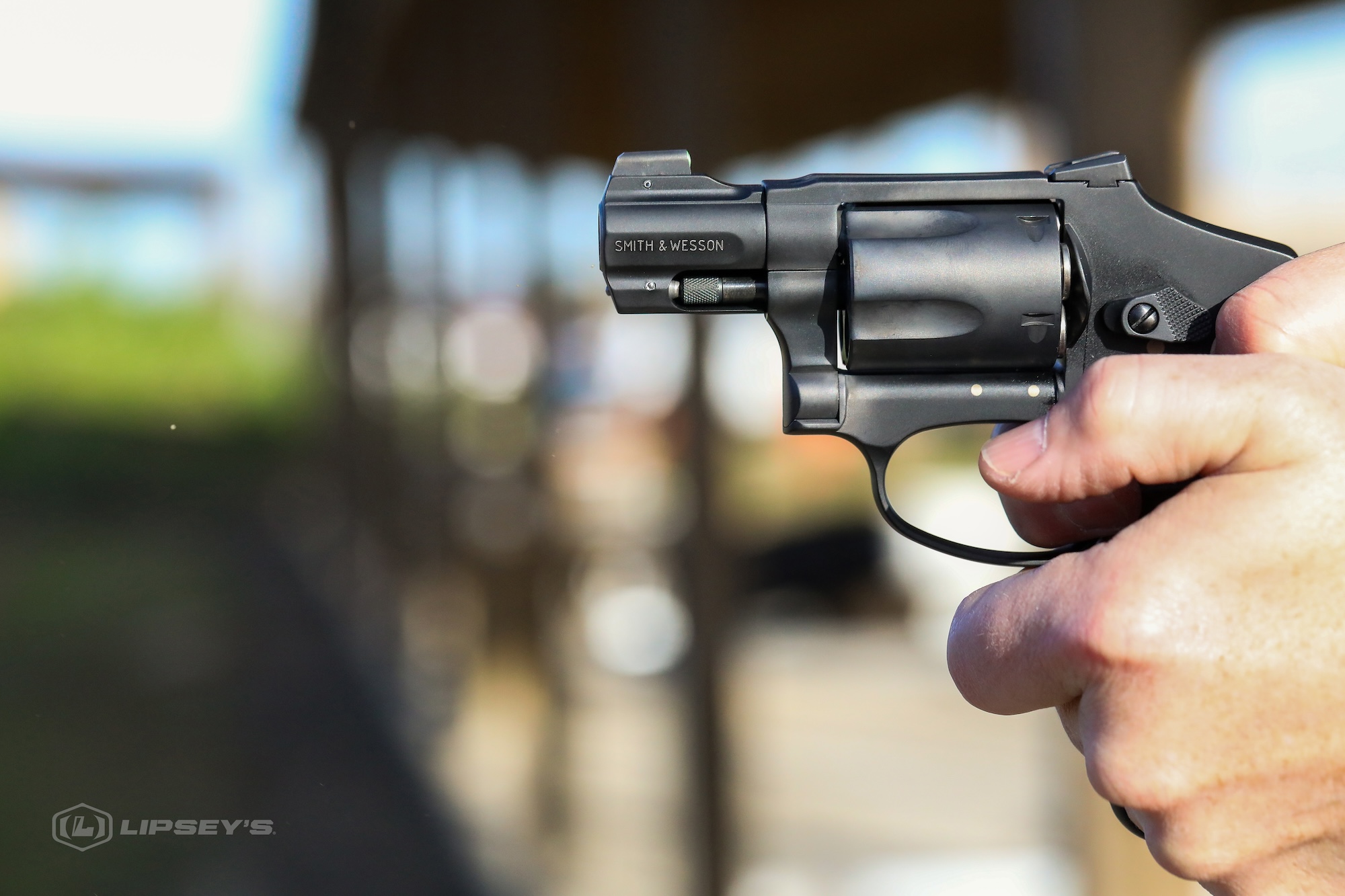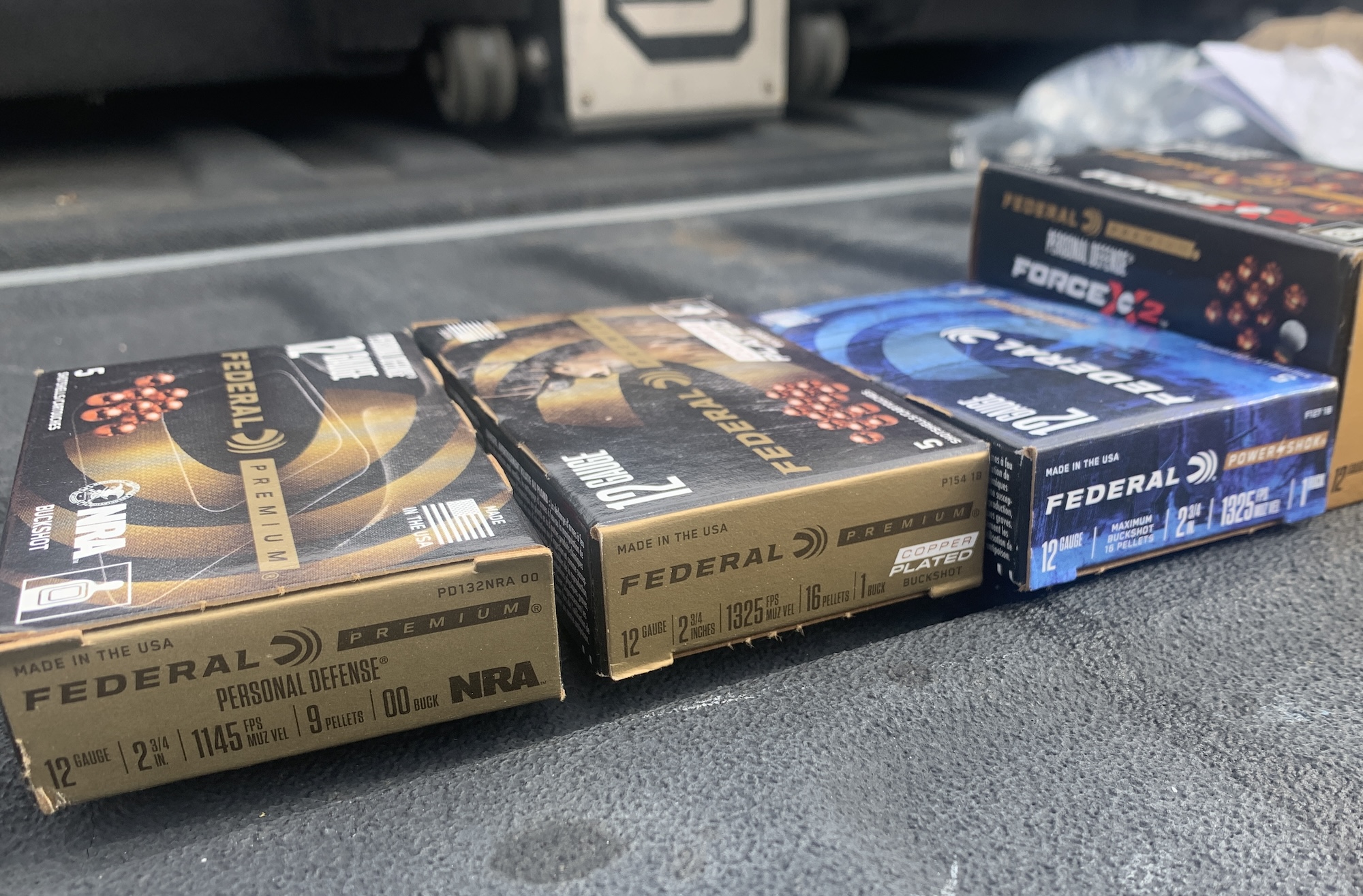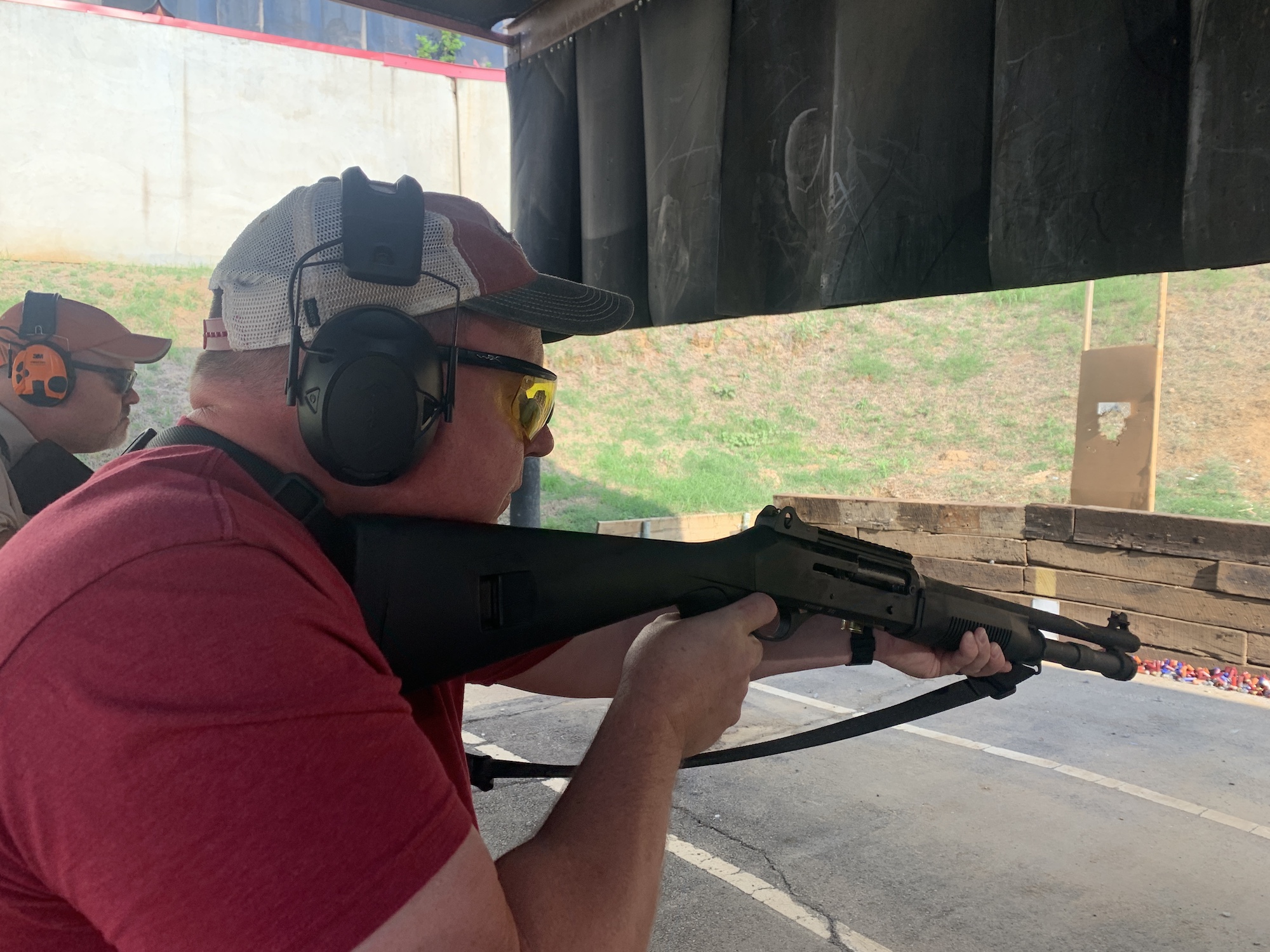
feature_9242
Low, High, Indoor, and CQB – just the different ready positions commonly employed by those who may have a shotgun in their hands. Which one is most likely as driven by one’s surroundings as by one’s preference?
Before we start, the strong hand holds the grip portion of the stock. The trigger finger is indexed on the mechanical safety if the shotgun is from Remington, Beretta, Benelli, or most other manufacturers. If you have a Mossberg, your thumb sits on the ambidextrous safety atop the receiver between the stock and the rear sight.
The safety is kept on until two things have happened: a) you have decided to shoot, the actual decision to use deadly force, and b) your sights are now aligned on the target. Only then do you take the safety off.
Low Ready

Jay – who has been through multiple shotgun classes – working from a low ready back at the 15 yard line. See how far the muzzle is depressed?
The most frequently used is the Low Ready. It is viable when covering down a hall or across a room, searching, or pointing it toward bad people doing bad things – like on a high-risk vehicle stop.
Regardless of what your lower body is doing, this position starts with the shooter’s head upright rather than hunched down or even into one’s shoulders. The toe of the stock stays in the shoulder pocket. The muzzle is lowered below any visible threat area – curbs, barriers, even below the feet of a threatening individual. Too often, a “low ready” like position has the muzzle pointed at a person’s thigh or just below where their hands fell. The support hand is grasping the forearm, ready to raise the gun to eye level and onto the target when needed. It can activate a weapon-mounted light from here as well.
High Ready
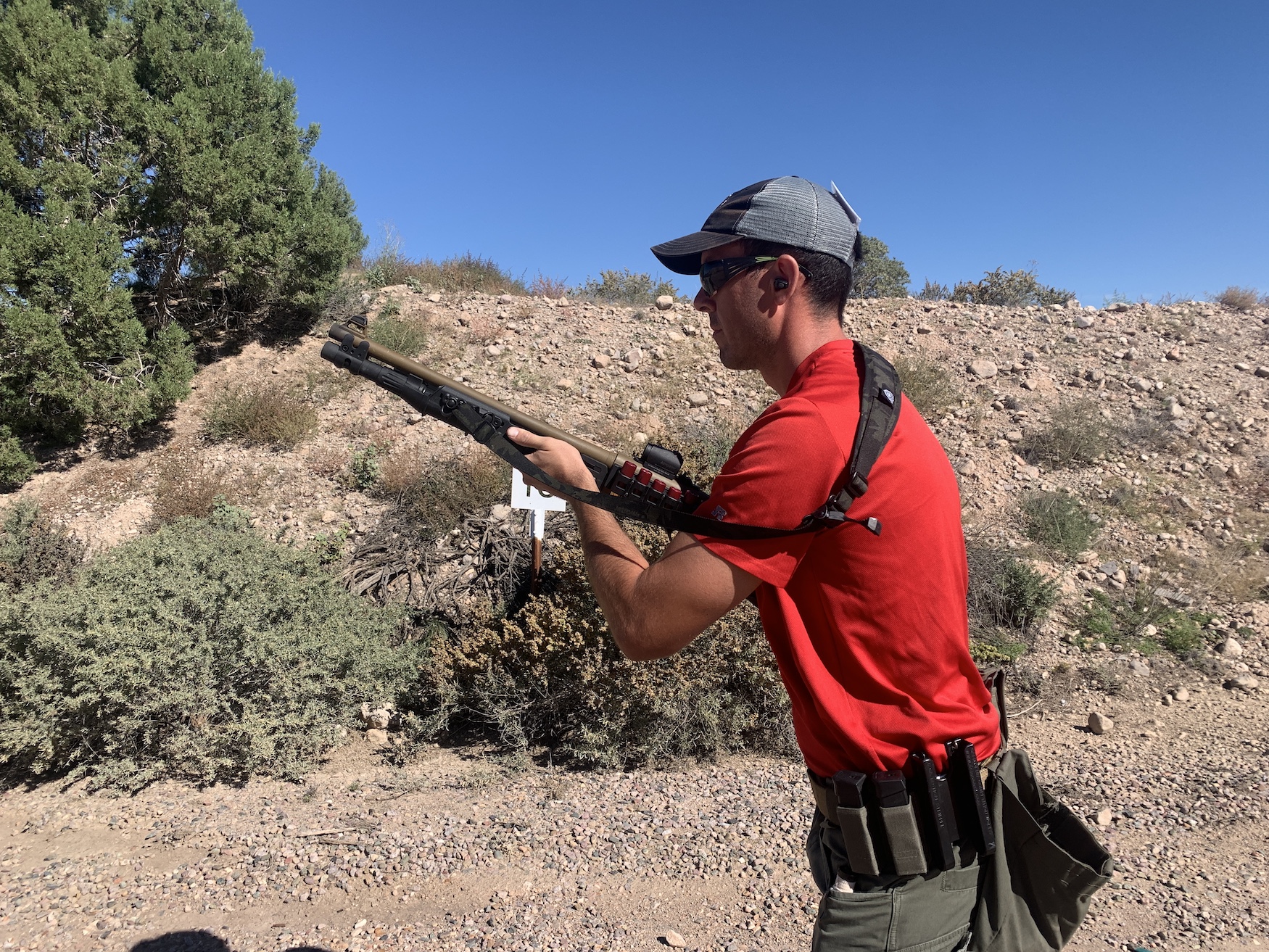
The high ready keeps the eyes, muzzle, and threat areas in the same plane. While the buttstock stays at the belt line.
Until recently, this was called the Outdoor Ready, which saw a lot of use across several disciplines. You could move with a shotgun or rifle carried this way to hunt various animals across the planet. It works when searching for people as well. If you have to bring the shotgun indoors, this works well when searching an open floorplan or in places with multiple floors above you, like in a warehouse.
The buttstock is kept down on the belt line. With your head up, the muzzle (or front sight) is raised to eye level. As you search, you move the muzzle in line with your eyes. When a target is located, and the decision to fire is made, the muzzle stays where it is. You will raise the buttstock before pulling it back into the shoulder pocket.
Close Ready
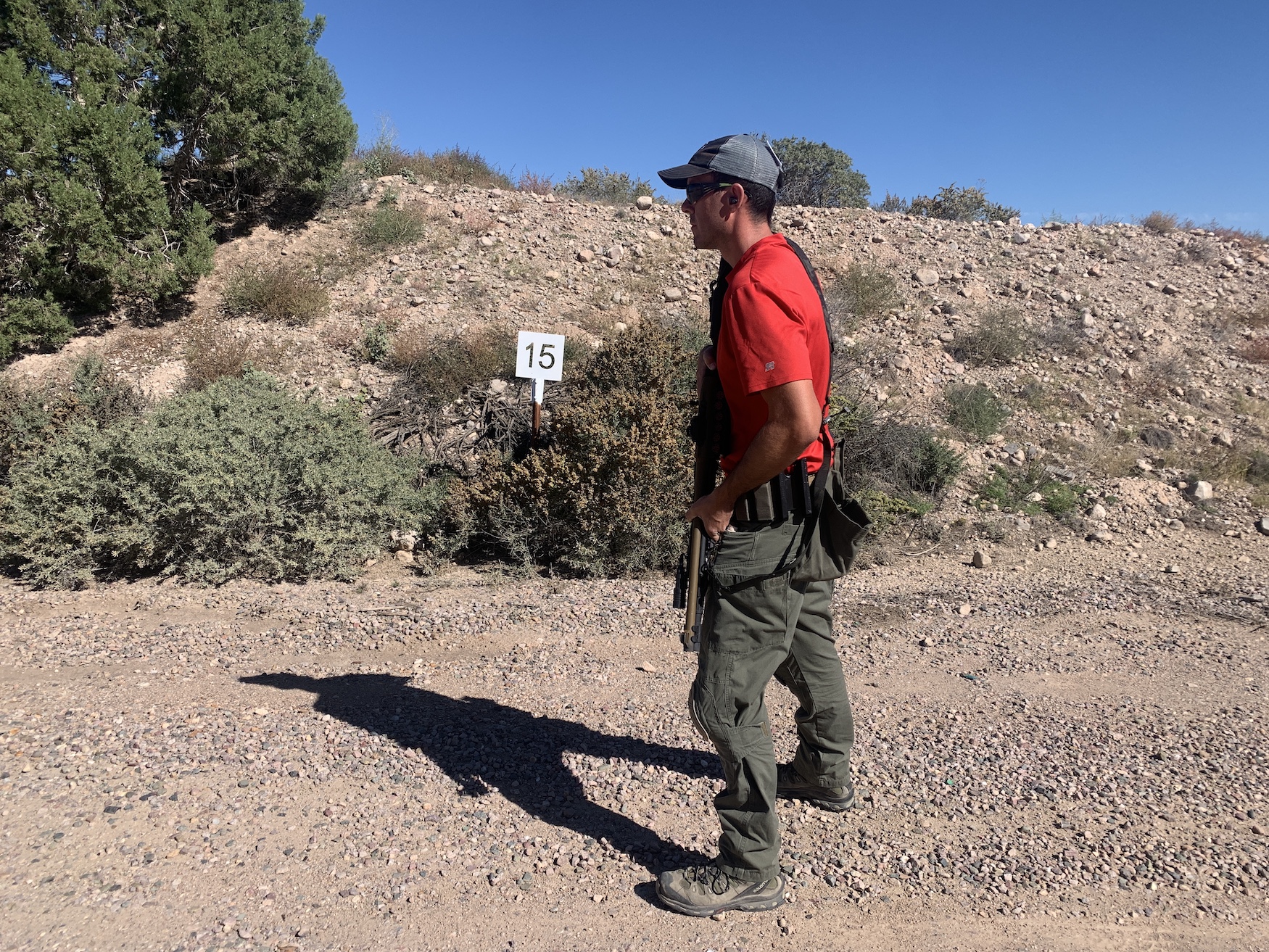
When working out of the close ready, the stock stays up by the shoulder while the muzzle goes outside of your support foot. His support forearm is touching his pistol magazines.
Formerly the indoor ready. It is used for more than just moving down a hallway without telegraphing your muzzle. It is also quite viable in thick brush where a low-ready position would see you frequently snagging the barrel on the foliage.
From being at a low ready or even on target, the muzzle is lowered and rotated to the outside of the support leg. I move my muzzle to have a tactile indicator of a pistol magazine or maybe my portable radio contacting my support arm. I know my muzzle is not covering my support leg or feet when that happens.
To bring the gun into action, I move it inboard until it is between my feet, then raise it onto the threat.
CQB Ready
This one comes to us from Rob Haught. Essentially, it is short stocking (not stroking) the shotgun to reduce its overall length in confined spaces.
You get there by rolling the sights inboard ninety degrees and then placing the flat of the stock on the flat of your strong side shoulder. Nothing is behind the buttpad, so you need to use Rob’s recoil mitigating Push-Pull method to fire the gun if it comes to that.
Post Engagement
After you have shot, you should scan and assess the area – looking for other threats and cover. Then put the safety back on and reload whatever ammunition you expended during the fight.
These ready positions – Low, High, Close, and CQB – give you various choices based on your surroundings and circumstances. You can practice all of them dry – and you should. Every one of them has proven effective when applied off the square range.



